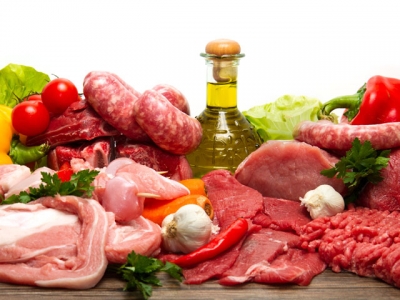
Have you watched the movie “My Big Fat Greek Wedding”? The movie is themed around a clash between two cultures. A young Greek woman from a conservative family wants to marry a man from an upper-middle-class American family. The woman, Toula, brings her fiancé lan, home for dinner and the entire family gathers to meet him.
At one point, Toula introduces him to her aunt, telling her he is vegetarian. The aunt asks what that means, and when lan says he doesn’t eat meat, she says in shock, “What do you mean you don’t eat no meat?” She stares at him for a few seconds and then she smiles, pats him on the shoulder, and says, “That’s OK, that’s OK, I make lamb.” Obviously, for the aunt, lamb is vegetarian. It eats grass, right?
The movie was released in 2002. Today, the Greek aunt would have other choices for “meat” that are vegetarian. And lan would be happy eating those dishes.
We now have meatless chicken nuggets, tofu hot dogs, and burgers that have fake “bleeding” with beetroot juice. It is the same with milk: food store shelves now stock coconut milk, cotton-seed milk, badam milk and milk from many other nuts. Products like these raise a question: what do we call these new breed of “meatless” meat items?
Can we call food items “meat” or “milk” if they don’t come from animals?
What does the word ‘meat actually mean?
In Old English, meat meant food in general. The word has roots in ancient German, and originally, meat wasn’t about animal vs. vegetable, but solid food vs. drink.
By 1300, meat began to take on a narrower meaning. It was understood as “the flesh of animals used for food” or “the edible part of anything, as a fruit or nut”, as in “the meat in coconut.”
Legal definition
Legally, meat has a much more specific meaning. In 1946, the United States Department of Agriculture (USDA) defined meat in the Agricultural Marketing Act.
This said: “… the edible part of the muscle of an animal which is skeletal or which is found in the tongue, in the diaphragm, in the heart, or in the oesophagus, and which is intended for human food, with or without the accompanying and overlying fat and the portions of bone skin, sinew, nerve, and blood vessels which normally accompany the muscle tissue and which are not separated from it in the process of dressing.”
Phew! That definition was updated in 1994 to include meat products “derived from advanced meat/bone separation machinery, which is comparable in appearance, texture, and composition to meat trimmings and similar meat products derived by hand.”
What about milk and fish?
So, the word “meat” should refer to flesh prepared from live animals.” Fine. But what about fish and other animals from the sea? We don’t call them “meat”, do we?
And what about milk? In 2017, a group of dairy farmers went to court saying the term “almond milk” was misleading and that almond extract should not be called milk.
Milk, after all, they said, means “an opaque white or bluish liquid secreted by the mammary glands of a female mammal, serving for the nourishment of their young.” Like meat, milk is a word recorded in Old English and passed down from an ancient Germanic root.
Ah, but the dairy farmers lost the case. They appealed to a higher court. The US Court of Appeals ruled that calling almond milk “milk” is not cheating. Come on, they said, “no reasonable consumer could be misled by unambiguous labelling or factually accurate nutrition statements.”
So now we have plenty of plant-based milks: oat milk and hemp milk are on supermarket shelves.
In European Courts there is agreement that consumers might be confused when plant-based foods are called “meat” or “milk.” In 2017, the European Court of Justice ruled that plant-based foods cannot carry the names butter, milk, or cheese. In 2018, France passed legislation in Parliament prohibiting specific labels, such as steak, from being applied to plant-based foods (for instance, “soy steak”). “Such names can be misleading,” said the MPs.
Rise of veganism
From around the 2000s, there has been a rise in the number of people turning to vegetarianism and veganism. Plant – based “meat” products became popular. Now, we have all kinds of fake meat products that have no meat. There is also laboratory-grown meat or “clean” meat.
“Don’t call it meat if it is not from animals!” say those who raise animals for meat. “If it is not from animals, it is not meat. The use the word “meat” to describe burgers and sausages that are made from plant-based ingredients or are grown in labs is illegal,” they say.
In 2018, Missouri in the United States became the first state to pass a law banning the use of the word meat on any plant- or lab-based meat alternatives.
Misleading or not?
Would you think that “soy steak” or “chick-pea burger” are foods derived from animals? Most people wouldn’t. Will the new, meat-free meat products get new names? Not likely. The whole point of selling these food items is to say that they look and taste the same, but have no meat in them. And buyers want them because they are looking for such products.
Picture Credit : Google

